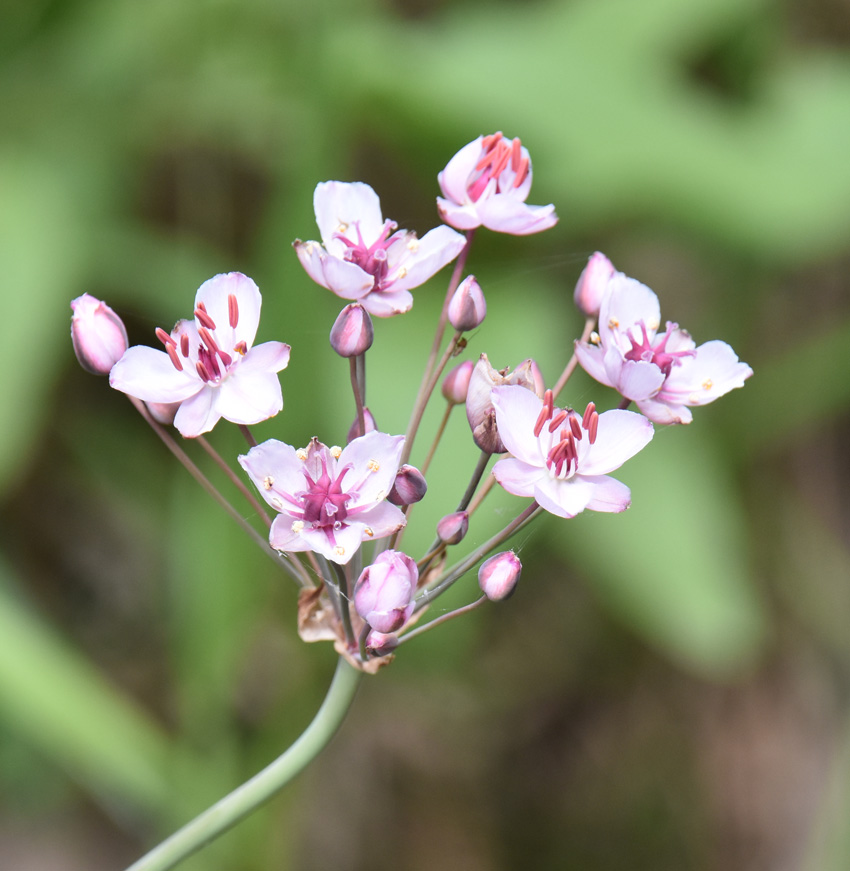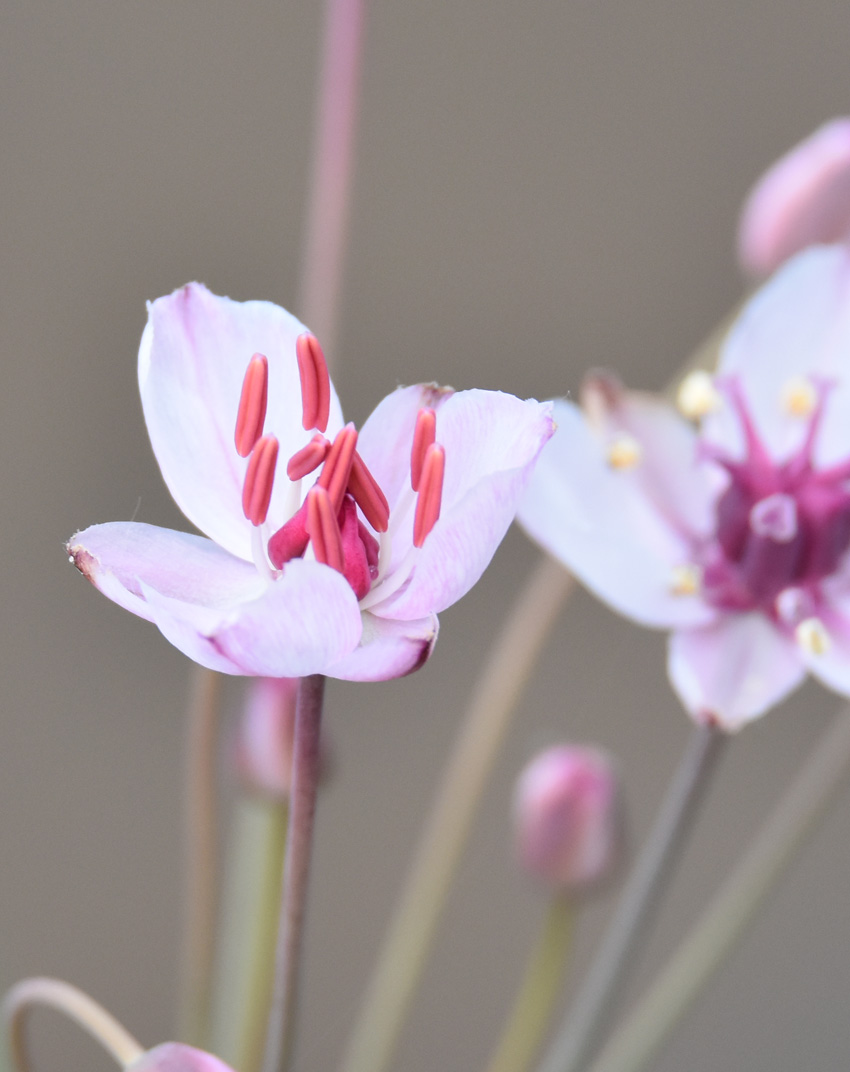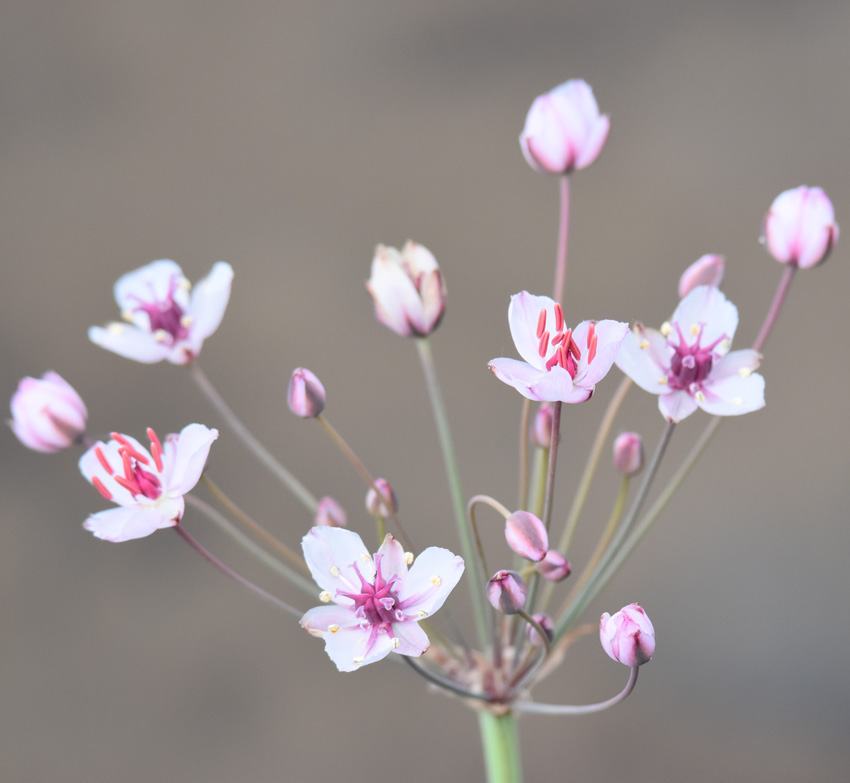If you’ve walked along a shore line in southern Ontario you may have come across a rather pretty large umbel of white and pink flowers on a very long leafless stem. If you look down to where the stem starts to see the leaves of the plant, you may notice they look a bit like cattails or bulrushes. In fact, it may be hard to sort out the leaves from those of other nearby plants. Unfortunately, if you come back in another five years, all of the leaves may be from this Flowering Rush.
Is Flowering Rush a Native Plant in North America?
No. Flowering Rush is a European plant. It used to be sold for gardens but many states and provinces have now banned the sale.
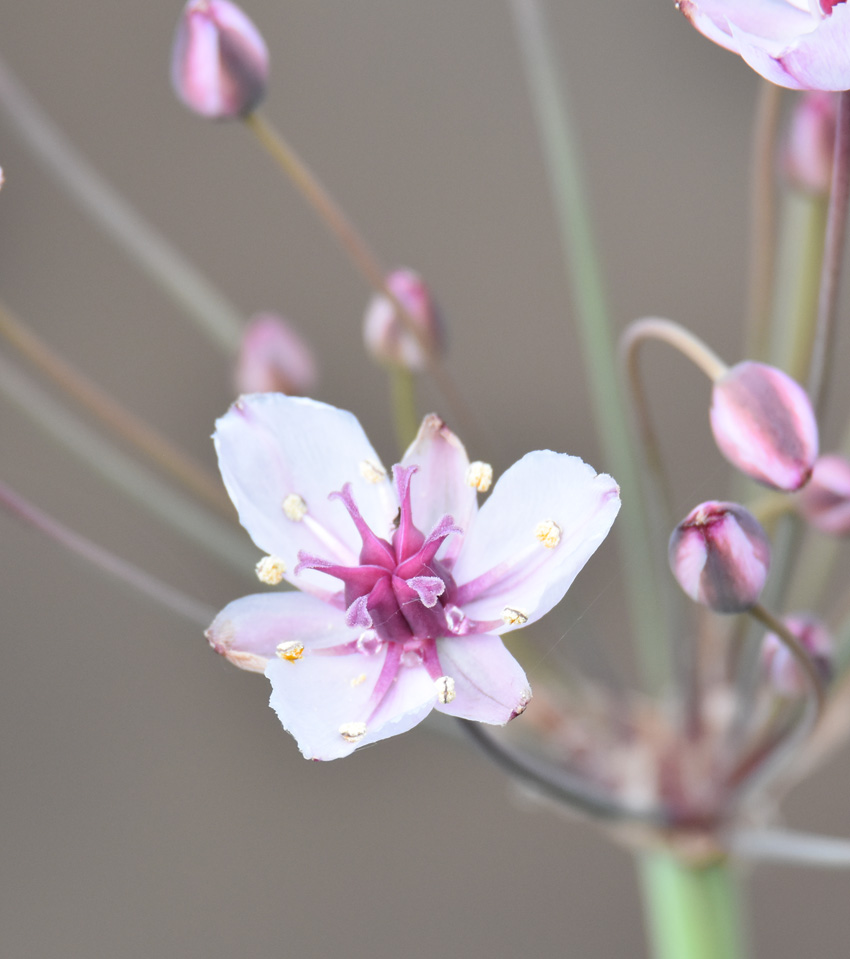 A fully open Flowering Rush blossom.
A fully open Flowering Rush blossom.
It spreads by seed but also if fragments of its roots or the bulb-lets are swept along creeks and rivers, especially during spring flood, they re-root and start new colonies easily. And, like many non-native plants, it seems to succeed at out-competing and taking over from our native wetland plants.
Feel Free to Pick the Flowers
Since these are not desirable native plants, if you do decide to pick a stalk of the flowers no one is likely to care.
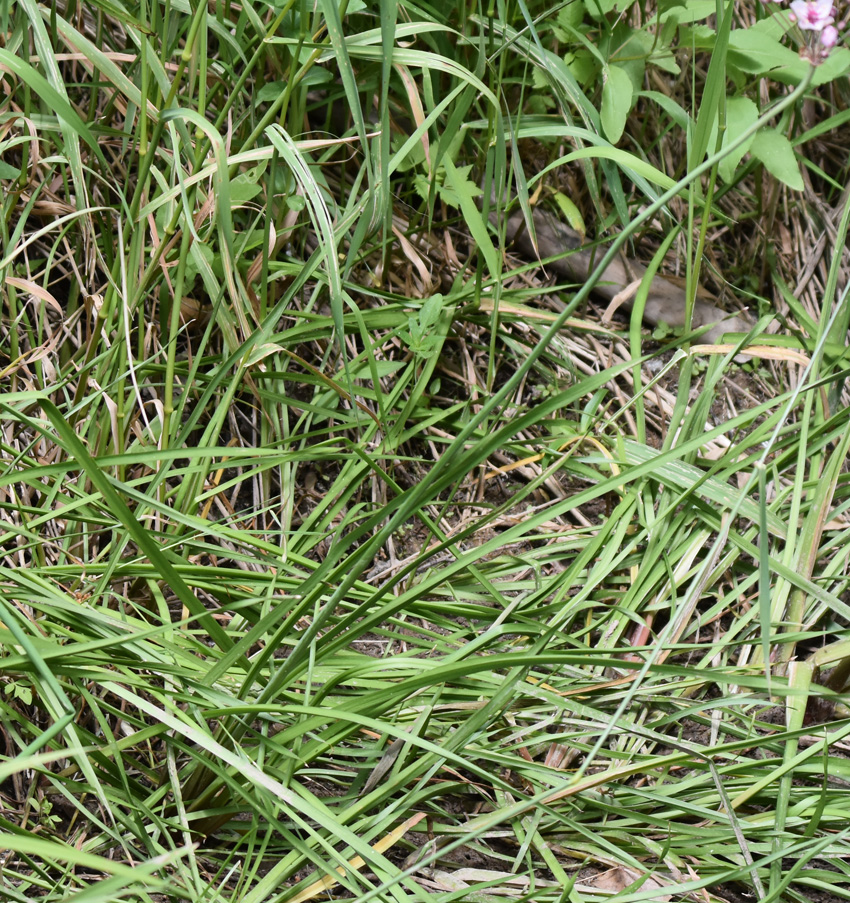
if you trace down the flower stem, you can see the leaves, which are very similar to several of the surrounding native plants.
Digging up the plants, however, is sometimes prohibited. That’s because you may loosen up pieces of roots called bulb-lets which can get carried down stream to start new colonies. (Muskrats sometimes start new colonies when they dig up the roots while searching for cattail tubers.)
Related Reading
- Minnesota DNR: Invasive Aquatic Plants: Flowering Rush
- Invasive Species Council of BC: Weed of the Week: Flowering Rush
- A Green Heron Near a Pink Plant
Join In
Does this pretty but unwelcome plant bloom along a waterway near you? Please share your sighting with a comment.

